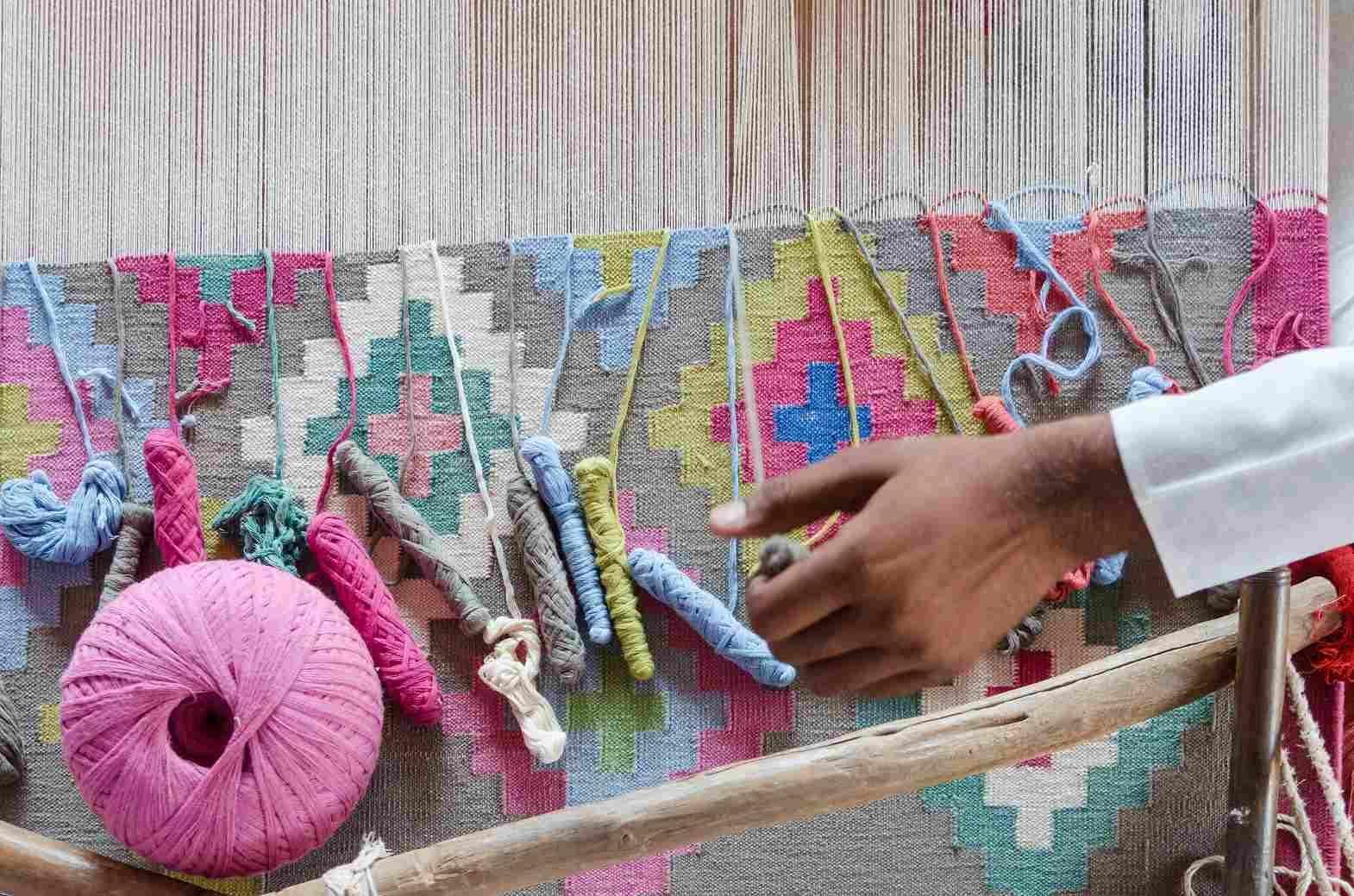China managed to stay close to its traditional dresses, but finally, the charm of other countries influenced the Chinese textile and apparel world. India's handloom industry, which was once a cynosure of all eyes, lost its Midas touch for a brief period of time. The handloom industry was considered unfit to compete with commercial manufacturing. On the constructive note, with the fashion world becoming more acceptable to traditions and cultures of various countries, the handloom industry of India is once again on the path of revival.
The handloom industry of India has been getting applause for its refreshing break from the past and contemporary inclusiveness that it offers to the consumers. Though India's 6.5 million workers' handloom industry is still finding it arduous to compete at the international level, but with several cooperative handloom enterprises cropping up, the worst is already over for the handloom industry. The handloom industry of India has evolved a lot and today it comprises not only Khadi but also brocades from Banaras, Madras checks from Tamil Nadu, tie and dye from Gujarat and Rajasthan, jacquards from Uttar Pradesh, ikats from Andhra and Orissa, phulkari from Punjab and daccai from West Bengal.
The Indian handloom industry produces 13 percent of the total cloth produced in the country, and out of the total handloom produced, 16 percent is exported. The Indian handloom is not about dull and drab designs anymore. The handloom industry that produces a wide range of textile products like fabrics, bed linen, table linen, toilet and kitchen linen, towels, curtains, cushions and pads, tapestries and upholstery, carpets and floor coverings, et al provides wonderful designs that are attractive and lively. The wide variety of choice with regard to designs and colours is ensuring that the Indian handloom industry gets the limelight it deserves.
Till now the handloom weavers encountered problems like unawareness about market trends, lack of innovative designs, out-of-date looms, yarn not of required count and poor quality of yarn. These aspects hindered the handloom exports. In order to give a facelift to the Indian handloom, these issues are being resolved with the support from the government. The government of India has played a significant role in helping the handloom industry find a revered place at the international level. The statutory body Handloom Export Promotion Council (HEPC) working under India's ministry of textiles promotes exports of handloom products including fabrics, floor coverings, carpets, home furnishings, and others. The HEPC supports and guides the handloom exporters regarding trade fairs, exhibitions, and buyer-seller meets around the world.
The HEPC also markets Indian handloom products at global level in order to ensure that there is awareness among the consumers worldwide regarding the Indian handloom. The council sets target for handloom export each year and since last three financial years the handloom industry has achieved these targets with ease and lan. The Handicrafts and Handloom Exports Corporation of India is also ensuring that the Indian handloom industry gets its due.
The government has taken another step forward to ensure that the handloom industry of India gets the ideal platform and for this purpose steps are being taken to promote the handloom products like tapestry, apparel, fabrics, etc. via on line shopping websites. This contemporary approach has ensured that handloom sector does not stay behind times as far as promotions and marketing are concerned.
The domestic demand and also the export demand of Indian handloom are on rise. The handloom is eco-friendly, gentle on skin, completely organic and represents tradition of India. Currently, the textile ministry of India has approached the government to grant certain concessions to handloom products and the ministry is hoping that if the decision goes in favour of the industry this could lead to a substantial rise in handloom exports of India.
The face of Indian handloom is fast changing and the future looks very promising. The handloom sector's products are finding acceptance by international textile community and are being identified as of top-notch quality. The current generation of designers and also consumers understand the exclusivity and distinctiveness of the Indian handloom.
Fabrics and clothing reflect the attitude of the society. The handloom industry of India is shaping the perceptions of the rest of the world regarding India. Though the reality and the journey of Indian handloom industry have not been dreamlike so far, but, the awareness among the designers and consumers has warranted a smooth going for the handloom sector from now on.
References:
1. America.aljazeera.com
2. Entrepreneurindia.com
3. Economictimes.indiatimes.com
4. Ibef.org
5. Hepcindia.com
6. Pib.nic.in









Comments